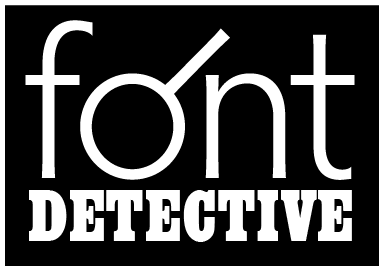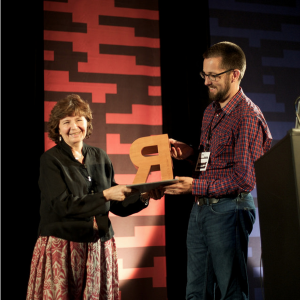Many of the same questions could reasonably be in play, whether one is choosing an existing typeface, commissioning a typeface, customizing an existing typeface, or designing a new typeface oneself. There may not even be a “typical design brief” for a new typeface—but there are certainly elements one should include and things to consider.
A design brief is sometimes neither written down, nor clearly developed. I encourage both aspiring type designers and clients of custom type design projects to go through the same process: write it all down. It will be helpful, often immensely, to articulate questions and goals clearly. It sets everyone’s expectations and creates reasonable limits.
Even in a solo project, sometimes there is a temptation to allow “goal creep” and more gets added to the project in small pieces, with a final scope that is considerably more than originally intended. Writing out a design brief can help prevent this.
Many clients don’t know what questions to ask, so the design brief is something that usually gets developed in collaboration between the type designer and the client. Or, when there is no specific client, it means asking the questions of yourself, to better focus the design process. Being specific is restrictive, but this is likely to result in a more successful design outcome—even if the final fonts are used in ways beyond what was originally intended (consider Bell Centennial, originally designed for telephone books).
A design brief may be a living document, revised over time during the early stages of the project as it unfolds. There may be a first round brief written in the early exploratory stages, and a later “final” brief to guide the full execution.
In any case, when taking on a new typeface design project, some good questions to ask might be:
Who is the client, or target customer?
Hypatia Sans: Myself/graphic designers. But I also wanted something Robert Slimbach would say was good, original, and versatile enough to be an “Adobe Original.” In case you are wondering what it looks like… this entire blog is set in Hypatia Sans, both body text and headlines.
Extensis logo redesign: Software company Extensis (my employer at the time)—makes font management & digital asset management apps.
Is it replacing a current typeface? If so, what does the client like and dislike about the current typeface? What is motivating the change?
Neither project was approached as a font replacement. For Extensis, I was specifically trying to ignore the previous logotype (which I disliked very much), just starting over. But along the way, I made a full basic-character-set font.
If they considered off-the-shelf options, what did they consider and what did they like about each of them? What did they dislike about each of them? Why did they not go with any of them?
Hypatia Sans: Although not replacing a single existing typeface, I was trying to differentiate it from other geometric sans. Futura was too cold, but the classic proportions of the caps were good. Instead of imitating them directly, I instead looked to the same source, classical roman caps (e.g. Trajan) for proportions. The Futura lowercase was too cold, but Avenir lowercase was too bland.
Extensis: I found this part incredibly helpful in the process of creating a new logotype recently for a font software company, Extensis. We looked at a bunch of specific typefaces and rejected them for a variety of reasons. In the end I took an existing typeface, Adelle (by Veronika Burian & José Scaglione of TypeTogether), and modified it quite heavily—with their permission, of course! But I used the knowledge of what my internal client and I liked about other typefaces to guide what I did to the pre-existing typeface. The logo is wider, a tiny bit lighter than the Thin weight of Adelle, and 5 of the 8 letters have significant design tweaks. But it did start with Adelle.
What is the typeface a vehicle for? What is to be communicated with it? In what way should it flavor the message? Is it intended for a particular project or product?
Extensis: We wanted it to feel modern and somewhat techno, yet warm and approachable. We had a very playful graphic for the logo—it was almost wacky. We needed the font to be playful enough to not clash with the graphic, but still be serious, to ground it all. It was a balancing act.
Is there a specific target usage?
E.g. “advertising headlines” or “body text in all publications and online.” Even if not…. What sizes will it be used at? In what media? How will the type be reproduced (imaged, rasterized)? On screen? For web pages? In print?
Extensis: The logo needed to function at pretty small sizes, as logos often do. Some of the typefaces we had considered were dropped because their weight got too spindly at small sizes on screen… they were not holding up well enough across all use cases.
Hypatia Sans: Originally I intended it for display usage. I imagined it being used for product packaging, maybe some logos. Then I found it worked surprisingly well even at larger text sizes. So I revised my plan and spaced it so it was OK in larger text sizes (like 12-14 pt in print). So, moderate amounts of body text, through to larger display sizes. Should look good on screen, but with details that will be interesting in print.
What else is known about the desired design category?
Extensis: We had decided we wanted something in the line of a slab serif typeface, something in a realm defined by typefaces such as Archer, Donnerstag, Vista Slab, and Adelle.
How many styles (individual fonts) are desired?
Regular, italic, bold and bold italic are four fonts right there (and no, you can’t get reasonable quality results by just using algorithmic slanting and bolding.) More weights, more widths, or other variants (eg different optical sizes) can all add up. Families of 8–20 fonts are common. The largest family I know of is Kepler, comprising 168 fonts!
Hypatia Sans: I wanted a wide dynamic range of weight, and ended up with six weights and their matching italics, from extra light to black.
What kind of language coverage is required?
Any other particular character set needs (e.g. particular symbols, math capability, whatever). There are a variety of semi-standard character sets and language groupings, but the whole matter is a bit fuzzy around the edges. A basic but complete western European character set might include over 200 glyphs. With central/eastern European accented letters (“extended Latin”), you would end up over 300.
Each of these choices involves either choosing to adopt somebody else’s pre-packaged language coverage definitions, or extensive research of your own. And some choices are more complex than they first appear: if you do Greek, do you also do polytonic Greek? If you do Cyrillic, which languages do you cover? (Cyrillic character sets are almost as complex as Latin.)
For Hypatia Sans I was completely out of control. Latin, extended Latin, and even more obscure. Cyrillic, extended Cyrillic… I ended up further formalizing and extending Adobe’s character set standards for Latin and Cyrillic because of it! My manager stopped me when I was considering Norse runes (I am not making this up, I swear). Still, it was too much and I regretted it later, when what seemed fun for one style became a ton of work, for the full range of weights and italics too. Plus, the project became so big and slow that I advanced massively in skill before I was done, and found myself redesigning some things, or just seeing things at the end that I wished I had done differently. In retrospect, I could have advanced my skills more efficiently/effectively by doing multiple smaller projects.
What kind of typographic extras (characters/glyphs) are required, or might be desirable?
Arbitrary fractions, both lining and oldstyle figures in both tabular and proportional widths and the five f-ligatures – fi fl ffi ffl ff – are now “basic” for me. But others might think of them as extras. I think of small caps as extras, especially if there is a large language support requirement. Superscript and subscript numbers? A full set of letters for ordinals? So many possibilities!
Create a glyph set definition
Now that you know what you want, consider documenting the glyph complement / character set fully, perhaps with a spreadsheet. If there are common characters not covered, that too should be mentioned or highlighted some way, either by the spreadsheet or in accompanying text.
Hypatia Sans ended up with something like 2700 glyphs per font ( 3000 after it was updated to match later character set standards). That is why it took for-bloody-ever to complete. I hope everyone learns from my errors! Not that you shouldn’t ever do a huge project, but just perhaps not as a first (or second or third) typeface.
Many of these things essentially multiply together. For example, if you need ‘real’ small caps, you should probably have them for all the supported languages, and in all the fonts in the family. This kind of extension of features to the full font is often assumed, but it is best to be explicit about it, so it can be part of a delivery checklist. It is even more important to be explicit if there are inconsistencies either within a font (small caps only for un-accented Latin?) or between fonts in the family (small caps only for the upright styles but not the italics?).
For reference
Adobe character sets: Latin (5 levels), Greek (2 levels), Cyrillic (3 levels). These do not include “typographic” extras such as small caps, oldstyle figures, or additional ligatures beyond the most basic (fi and fl). But they are fairly comprehensive for language and basic symbol coverage.
Thomas’ page of type design resources!
Note
This is a much edited version of what was once a Quora anwer. Special thanks to Dave Crossland for edits and input when we used this in our Crafting Type classes! Any errors or omissions entirely my fault. Also see discussion about typeface design briefs on Typedrawers.

